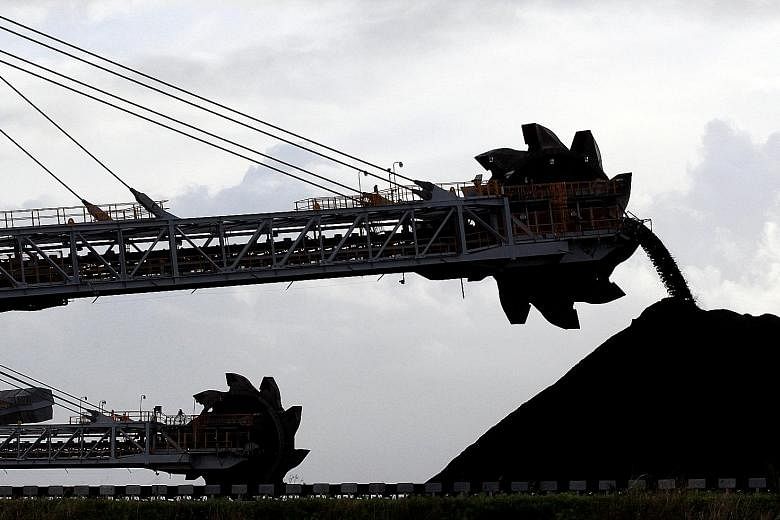Financial trading of thermal coal has virtually ceased in Asia as a result of the woes at one major trading house and the growing dominance of another, despite the region being by far the world's biggest consumer of the fuel.
Data from several exchanges shows that since its heyday in 2015, Asian coal futures trading activity has declined by over 90 per cent.
Asia gobbles up some 70 per cent of all coal used for power generation, and the unprecedented demise of its futures market poses significant risks for utilities in particular.
With coal prices rising sharply this year, power generating companies would usually hedge or protect themselves by taking positions in related derivatives markets.
"With Asia's futures (trading) pretty much gone, that greatly increases our risk for supplies in that region. It may mean that we source less from there going forward," said a risk manager with a big European utility, declining to be named as he was not authorised to speak publicly about company risk.
Two senior coal brokers and six senior traders at merchant houses, utilities and miners whom Reuters spoke to pointed to the shrinking role of Singapore-listed commodity merchant Noble Group as the single most important factor in the decline of Asian coal futures volumes.
Noble has sold off assets and slashed trading operations following allegations from Iceberg Research in 2015 that it had overstated its assets by billions of dollars, sending its share price tumbling.
"Noble is a massive loss to the market. Its troubles seriously dented liquidity," one trader said.
Noble declined to comment for this article, but said in a letter to the Singapore Exchange in May that "very thin trading liquidity" in hedging instruments had contributed to its first-quarter losses.
Many traders also see a link between declining Asian coal futures and the growing dominance of a single company in supplying physical Asian coal. Swiss-based, London-listed Glencore is the world's biggest producer of thermal coal, exporting well over 50 million tonnes from Australia alone last year, a quarter of the country's shipments.
Newcastle coal prices, which act as Asia's key futures benchmark, have jumped from around US$70 to over US$100 per tonne this year.
Glencore, which owns a dozen thermal coal mines in Australia, declined to comment. But market participants say the firm is not as active in coal futures trading as many of its peers, instead preferring bilateral supply deals with customers.
Glencore's control and knowledge of actual coal output in Australia - and the influence this has on derivatives contracts - means it is difficult for outsiders to predict price movements.
"If you don't know what Glencore's mines are up to, it's very hard to trade Australian coal futures," said one trader with a large European utility. "It's not Glencore's wrongdoing, just the way it is."
The decline in Asian coal futures volumes stands in stark contrast to booming oil and natural gas futures.
The amount traded in front-month Australian coal futures on the Intercontinental Exchange has collapsed from a high of over 1.6 million tonnes in September 2014 to under 290,000 tonnes last month.
Data from rival CME Group shows that open interest, which describes the number of open positions, of its Asian coal futures has fallen from around 2.7 million tonnes in early 2015 to just 65,000 tonnes in August this year, with Indonesian and Chinese futures totally vanishing.
"In that sort of environment, utilities stop hedging. It's too risky," said a senior coal trader with a major commodity merchant.
Noble's troubles and Glencore's strength are not the only reasons for the malaise.
Unlike many other markets, no single exchange has attracted enough liquidity to hedge reliably.
Instead, bourses like ICE, CME and others including China's Zhengzhou Commodity Exchange (ZCE), the Singapore Exchange or the European Energy Exchange offer contracts with varying delivery options, differing underlying coal qualities, and in various currencies.
Chinese exchanges like ZCE have grown somewhat, but months can still pass without trades, and Chinese coal futures are problematic for international traders.
"There has been quite a bit of turmoil in the coal trading business," said Mr Ben Tait, analyst at British energy consultancy Prospex Research. "China is the driver. Its coal policy shifts can make prices soar or plunge. This has led to some big trading losses."
REUTERS

